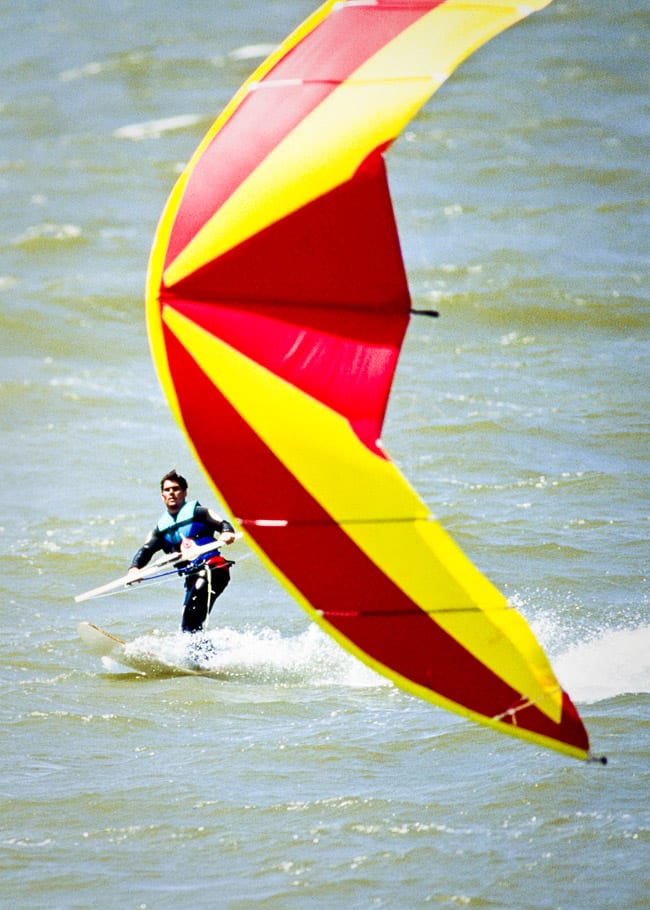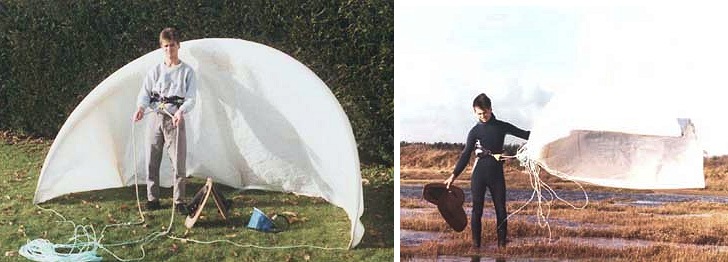Who Invented Kitesurfing?
Kitesurfing, also known as kiteboarding, is a relatively new sport that has gained popularity around the world since the late 1990s. The sport combines elements of surfing, windsurfing, and paragliding to create a unique and thrilling experience that allows riders to harness the power of the wind and ride the waves in a whole new way. But who invented kitesurfing?
The credit for inventing kitesurfing is somewhat mired. The sport was being discovered simultaneously in the US by Cory Roeseler and in France by the Legaignoux brothers. Cory was using traditional rigid strut power kites controlled with a bar to propel him across the water on a pair of waterskis. Meanwhile, in France, Bruno Legaignoux and his brother Dominique Legaignoux, who were both avid windsurfers in the late 1970s and early 1980s, were experimenting with different ways to use the power of the wind to propel themselves across the water, and they began to focus on the idea of using an inflatable kite to catch the wind.
In the early 1980s, the Legaignoux brothers began developing a prototype of a kite that could be used for watersports. They created an arc-shaped kite with an inflatable leading edge and struts that would maintain its shape in the wind and float if it crashed into the water. A control bar was attached to two lines that allowed the rider to steer the kite in different directions. They patented their design in 1984 and soon after began experimenting with using the kite to pull a rider on a surfboard.
Over the next few years, the Legaignoux brothers continued to refine their design and test their invention in the waters off the French coast. They soon realized that the sport had the potential to be a major new watersport, and they began to share their design with other windsurfers and water sports enthusiasts around the world. Manu Bertin deserves credit here for taking the new kite over to Maui, the Mecca for windsurfing, this hotbed for watersports soon adopted the new sport and riders like Laird Hamilton, and Robby Naish got on board, legitimising the sport despite its very infant beginnings.
In 1998, the first international kiteboarding competition was held in Maui, Hawaii, and the sport began to gain mainstream attention. By the early 2000s, kitesurfing had begun to gain popularity in Europe, Australia, and the United States. Riders were experimenting with different types of kites and boards and developing new techniques for using the power of the wind to perform tricks and manoeuvres on the water.
Since then, kitesurfing has continued to evolve and grow, with new technologies and designs being developed to make the sport safer, more accessible, and more fun for riders of all levels. Today, kitesurfing is enjoyed by hundreds of thousands of people around the world, from amateurs to professionals, and is recognized as a legitimate and exciting sport that offers a unique and thrilling way to connect with the wind and the water. It has developed into many different disciplines, freeride, freestyle, racing, waves, and hydrofoiling, it is this ability to do so many different things with the kite that keeps the sport entertaining and exciting for the riders. In 2024 kitesurfing will be at the Olympics in Paris, putting it on the world’s biggest sporting stage. It all started with the inventive spirit and creativity of the Legaignoux brothers and Cory Roeseler, who saw the potential for a new type of watersport and brought it to life.









